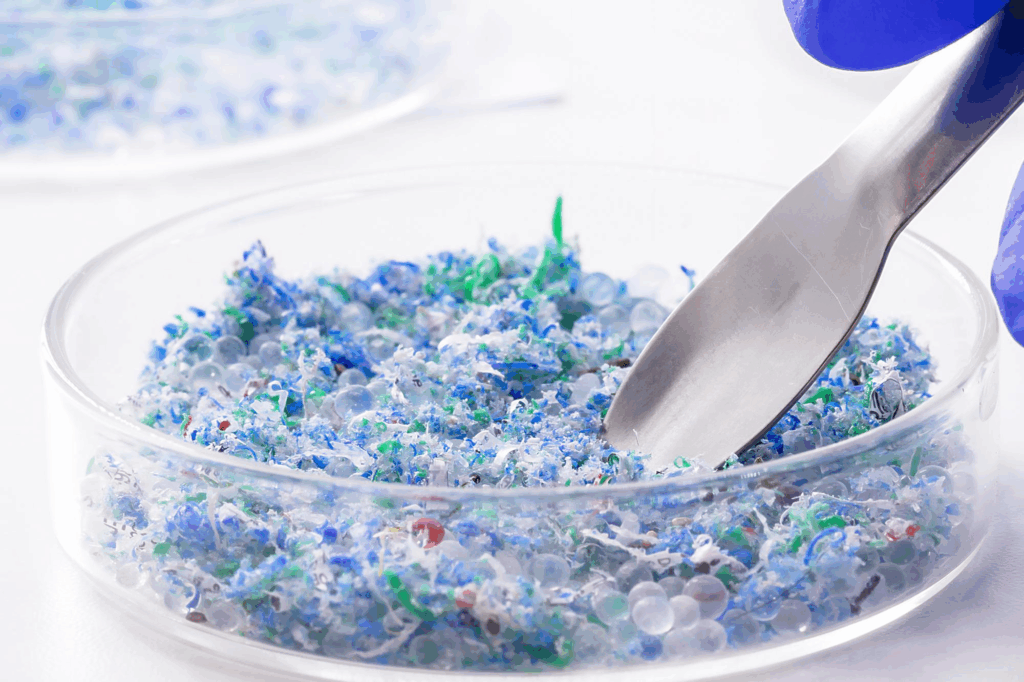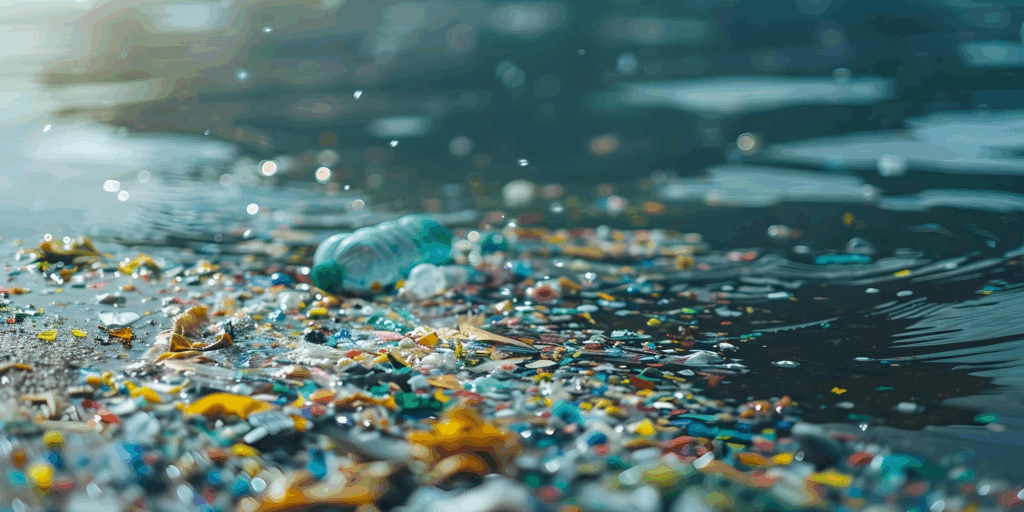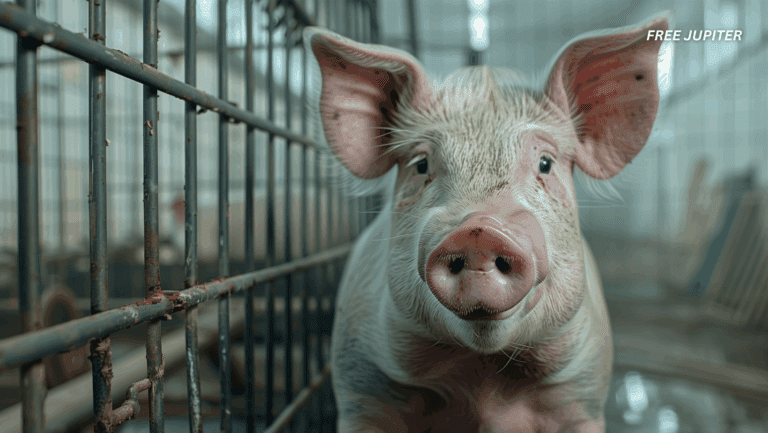Friendly Note: FreeJupiter.com shares general info for curious minds 🌟 Please fact-check all claims—and always check health matters with a professional 💙
Chewing gum may be exposing your mouth to an unexpected source of microplastics. These tiny plastic particles are not just an environmental concern anymore, they might be lingering between your teeth.
A new study reveals what happens with every chew and why it matters for your health. Chewing gum may be exposing your mouth to an unexpected source of microplastics.
What The Study Found Inside Chewing Gum
Scientists analyzed a variety of popular chewing gum brands and found that many contain synthetic polymers. These polymers break down during chewing, releasing microplastics into the mouth.
The materials often used in gum bases include polyethylene and polyvinyl acetate, which are the same substances found in plastic bags and adhesives. When chewed, friction and saliva combine to create the perfect condition for tiny plastic fragments to detach and stay behind.
Scientists analyzed a variety of popular chewing gum brands and found that many contain synthetic polymers. These polymers break down during chewing, releasing microplastics into the mouth.
Read More: Firefighters Warn Public Of The Danger Of Leaving Water Bottles In Cars
How Microplastics Enter the Body Through Gum
Microplastics are not just swallowed by accident; they can also be absorbed through the soft tissues in the mouth. The mucous membranes inside the cheeks and under the tongue are highly absorbent.
That means microplastics have a direct route into your bloodstream. Unlike plastic particles found in water or food, the chewing process may speed up how fast these particles enter the body. Repeated exposure multiplies the risk.
Microplastics are not just swallowed by accident; they can also be absorbed through the soft tissues in the mouth. The mucous membranes inside the cheeks and under the tongue are highly absorbent.

Why This Matters More Than You Think
Most people associate microplastics with polluted oceans or bottled water, not their gum habit. But chewing gum is often used daily and sometimes for hours at a time. That increases your exposure significantly.
Researchers suggest that the consistent release of microplastics during gum-chewing could be a silent contributor to the growing body burden of plastic in the human body.
The long-term effects remain unclear but are deeply concerning. Most people associate microplastics with polluted oceans or bottled water, not their gum habit. But chewing gum is often used daily and sometimes for hours at a time.
Health Concerns Linked to Microplastics
Studies have linked microplastics to inflammation, oxidative stress, and even hormone disruption. When these particles enter the body, they can lodge in organs or tissues.
Although research is ongoing, experts believe that microplastics may interfere with cell functions, contribute to chronic diseases, and damage the gut microbiome.
Chewing gum could be a more serious health risk than once thought. Studies have linked microplastics to inflammation, oxidative stress, and even hormone disruption. When these particles enter the body, they can lodge in organs or tissues.
Read More: Scientists Discover Flamingos Use Underwater Vortexes to Vacuum Up Their Prey
Children May Be At Greater Risk
Children and teenagers are among the biggest consumers of chewing gum. Their developing bodies are more vulnerable to toxins and synthetic chemicals.
With schools and media normalizing gum use as a casual activity, there is little awareness of the possible risks. Experts warn that repeated microplastic exposure at a young age may lead to higher levels in the body over time.
Children and teenagers are among the biggest consumers of chewing gum. Their developing bodies are more vulnerable to toxins and synthetic chemicals.
Environmental Labels May Not Help
Even chewing gums labeled as “natural” or “biodegradable” sometimes contain hidden synthetic ingredients. The term “gum base” is often used to obscure what the product is actually made of.
Without full ingredient transparency, it’s difficult for consumers to know if they’re being exposed to microplastics. Researchers encourage stricter labeling laws and more independent testing.
Even chewing gums labeled as “natural” or “biodegradable” sometimes contain hidden synthetic ingredients. The term “gum base” is often used to obscure what the product is actually made of.

Are There Safe Alternatives?
There are plant-based gums made with natural chicle or other biodegradable ingredients. These alternatives avoid synthetic polymers and reduce the risk of releasing microplastics during chewing.
However, these products tend to be less common and more expensive. Consumers who want to avoid microplastics should read ingredient lists carefully or consider quitting gum altogether.
There are plant-based gums made with natural chicle or other biodegradable ingredients. These alternatives avoid synthetic polymers and reduce the risk of releasing microplastics during chewing.
The Industry’s Response So Far
As awareness grows, some gum manufacturers are beginning to explore more natural formulas. But the vast majority still rely on cheap, synthetic ingredients. There’s little regulation requiring companies to disclose their full gum base composition.
Until that changes, chewing gum may remain an unregulated source of microplastics for millions of people worldwide. As awareness grows, some gum manufacturers are beginning to explore more natural formulas. But the vast majority still rely on cheap, synthetic ingredients.
How to Protect Yourself From Microplastics
If you’re concerned about your exposure, start by limiting how often you chew gum. Opt for natural alternatives when available. Focus on reading product labels even if the wording is vague.
Staying informed is the first step in reducing the presence of microplastics in your daily routine. Reducing overall plastic use in other areas of life can also help lower your cumulative exposure.
If you’re concerned about your exposure, start by limiting how often you chew gum. Opt for natural alternatives when available.
Health Risks Of Microplastics
This study sheds light on a surprising source of microplastic exposure hiding in plain sight. Chewing gum might seem harmless, but it could be delivering plastic particles into your mouth with every chew.
With the health risks of microplastics still unfolding, avoiding unnecessary exposure seems like a smart move. Until the industry changes or stricter regulations emerge, it’s up to consumers to make informed choices about what goes in their mouths.
This study sheds light on a surprising source of microplastic exposure hiding in plain sight. Chewing gum might seem harmless, but it could be delivering plastic particles into your mouth with every chew.
Disclaimer: The information in this article is for general informational purposes only and is not medical advice. We are not doctors, and this website is run as a family hobby project. Always consult a qualified healthcare professional before making decisions about your health. Please fact-check any claims and use this content as a starting point, not a substitute for professional guidance.










